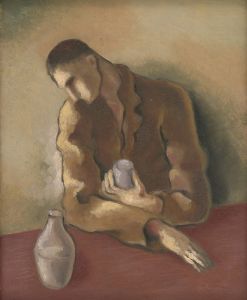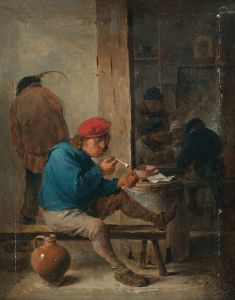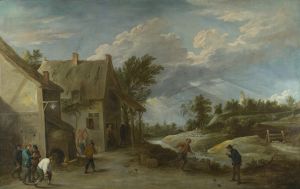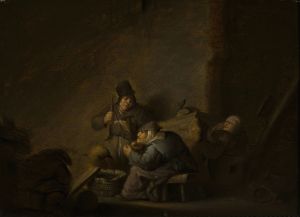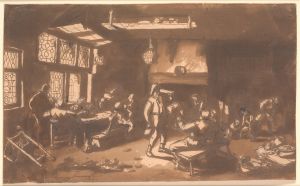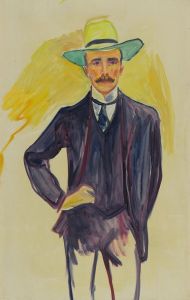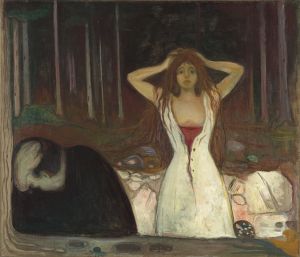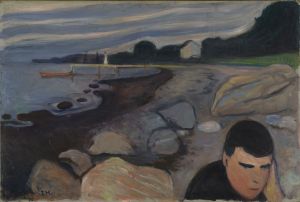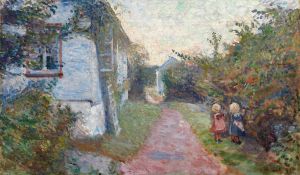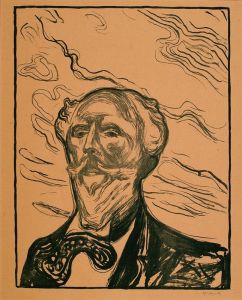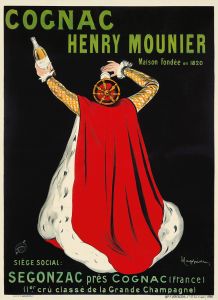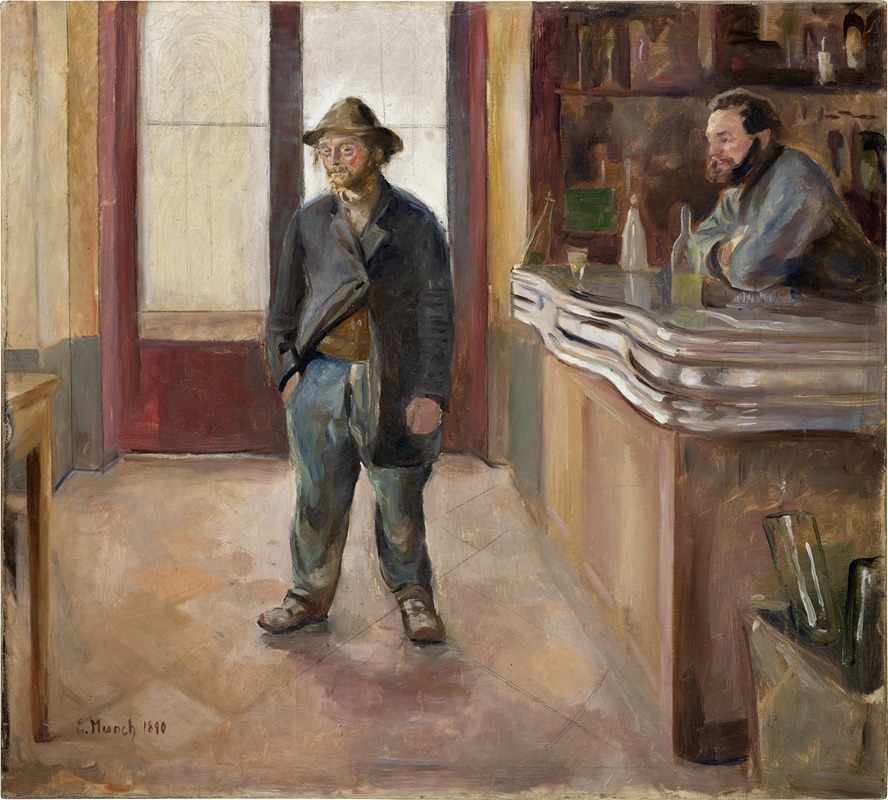
In the Tavern
A hand-painted replica of Edvard Munch’s masterpiece In the Tavern, meticulously crafted by professional artists to capture the true essence of the original. Each piece is created with museum-quality canvas and rare mineral pigments, carefully painted by experienced artists with delicate brushstrokes and rich, layered colors to perfectly recreate the texture of the original artwork. Unlike machine-printed reproductions, this hand-painted version brings the painting to life, infused with the artist’s emotions and skill in every stroke. Whether for personal collection or home decoration, it instantly elevates the artistic atmosphere of any space.
Edvard Munch's painting In the Tavern is a lesser-known work by the renowned Norwegian artist, who is best known for his iconic painting The Scream. Created in 1890, In the Tavern reflects Munch's early exploration of themes related to human emotion, social interaction, and the psychological undercurrents of everyday life. The painting is part of Munch's broader body of work that often delves into existential questions and the complexities of human relationships.
The artwork depicts an interior scene of a tavern, where figures are gathered in a social setting. Munch employs loose brushwork and a muted color palette, characteristic of his style during this period, to evoke a sense of atmosphere and mood rather than focusing on precise details. The figures in the painting appear absorbed in their own thoughts or interactions, creating a sense of introspection and detachment that is a recurring theme in Munch's work.
In the Tavern was created during a formative period in Munch's career, as he was transitioning from naturalistic depictions to a more symbolic and expressive approach to art. This period saw Munch experimenting with techniques and themes that would later define his mature style. The painting reflects influences from the Symbolist movement, which emphasized the expression of emotions and ideas over realistic representation.
The setting of the tavern may also hold significance, as such spaces were often associated with social gatherings, intellectual exchange, and sometimes solitude. Munch himself was known to frequent cafés and taverns, which served as important venues for artistic and philosophical discussions in late 19th-century Europe. These environments may have inspired his depictions of similar scenes in his artwork.
While In the Tavern is not as widely recognized as some of Munch's other works, it provides valuable insight into his artistic development and the themes that preoccupied him throughout his career. The painting is part of the collection of the Munch Museum in Oslo, Norway, which houses a comprehensive selection of the artist's works and serves as a key resource for understanding his contributions to modern art.
As with many of Munch's works, In the Tavern invites viewers to reflect on the emotional and psychological dimensions of human experience, making it a compelling example of his early explorations in this area.





